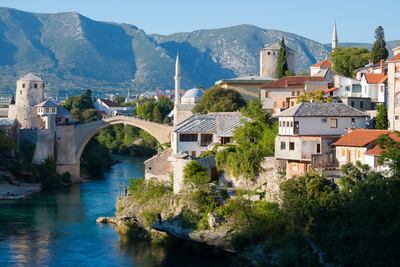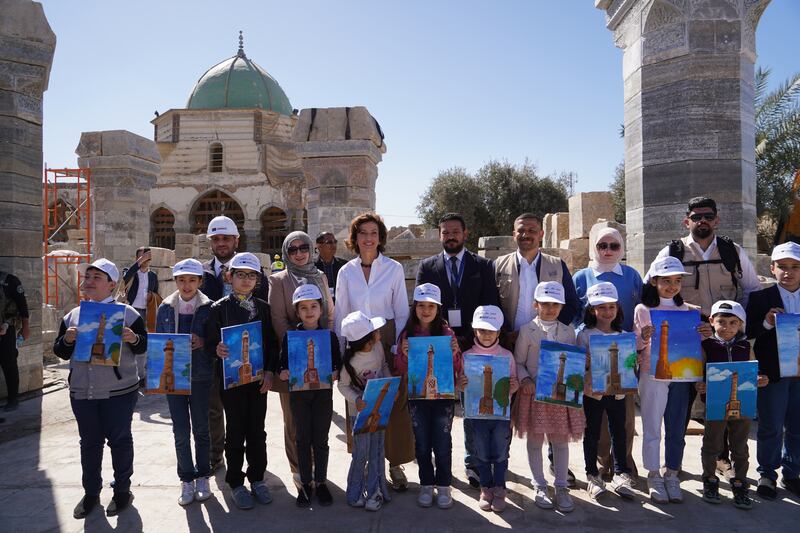The people of Mosul, forced to live under ISIS rule between 2014 and 2017, would be the first to say that few other cities have suffered as much as theirs in recent years, both under the extremists' control and during the military campaign to liberate the city.
Mosul – which means “the linking point” in Arabic – is a place of historic diversity targeted by fanaticism. Few members of its Christian community remain and key symbols of its cultural and architectural heritage, including places of worship, were desecrated by ISIS fighters during their reign of terror.
And yet, Mosul has also shown its resilience and strength through difficult times. And this week witnessed another example of how restoring and preserving sites of cultural significance is a critical part of rebuilding societies torn apart by conflict. On Tuesday, a UAE-Unesco partnership started the final reconstruction phase of the city’s 12th-century Al Nuri mosque complex, including its Al Hadba minaret.
Once a symbol of Mosul’s rich history and culture, the landmarks were blown up by ISIS as government forces approached its Old City in June 2017. In April the following year, the UAE pledged more than $50 million to rebuild Al Nuri mosque and two historic churches, working closely with Unesco and the Iraqi government on the project.

In a ceremony on Tuesday held alongside Iraq's Culture Minister, Ahmed Al Badrani, Unesco's Director General Audrey Azoulay laid a handful of the stones recovered from the ruins of the mosque in 2017, describing the complex as a “symbol of Iraq's rich history and by rebuilding it, we are reviving this symbol”.
At the same time, a forum in Abu Dhabi organised by the International Alliance for the Protection of Heritage in Conflict Areas (Aliph) and the Department of Culture and Tourism heard how many of Iraq’s ancient sites could over the next five to six years be restored to their former glory, with the work putting the spotlight back on culture and communities.
There are significant historical examples where reconstruction work has a valuable role to play after the tide of war has ebbed. In Bosnia, the Old Bridge in the town of Mostar, which was built in 1566, was destroyed during the collapse of Yugoslavia into war. Its reconstruction, with the involvement of Unesco, brought together five donor countries and the World Bank, and became a potent symbol of resilience, rebirth and reconciliation.
Such resilience will be needed in the years to come in Turkey and Syria, where last month’s earthquakes destroyed or severely damaged numerous cultural landmarks – such as Gaziantep Castle, built in the 2nd and 3rd centuries. Valuable history in other countries remains at risk – in January, sites in Yemen and Lebanon were among those added to the UN's list of world heritage in danger.
What the Mosul reconstruction reveals is that as well as helping people displaced or left jobless by conflict and natural disasters, cultural restoration can offer work, economic benefits and, perhaps most importantly, lift a community’s morale. In any crisis, saving lives and protecting the vulnerable comes first, but when the time comes to rebuild, restoring a country’s spirit can be just as important.





